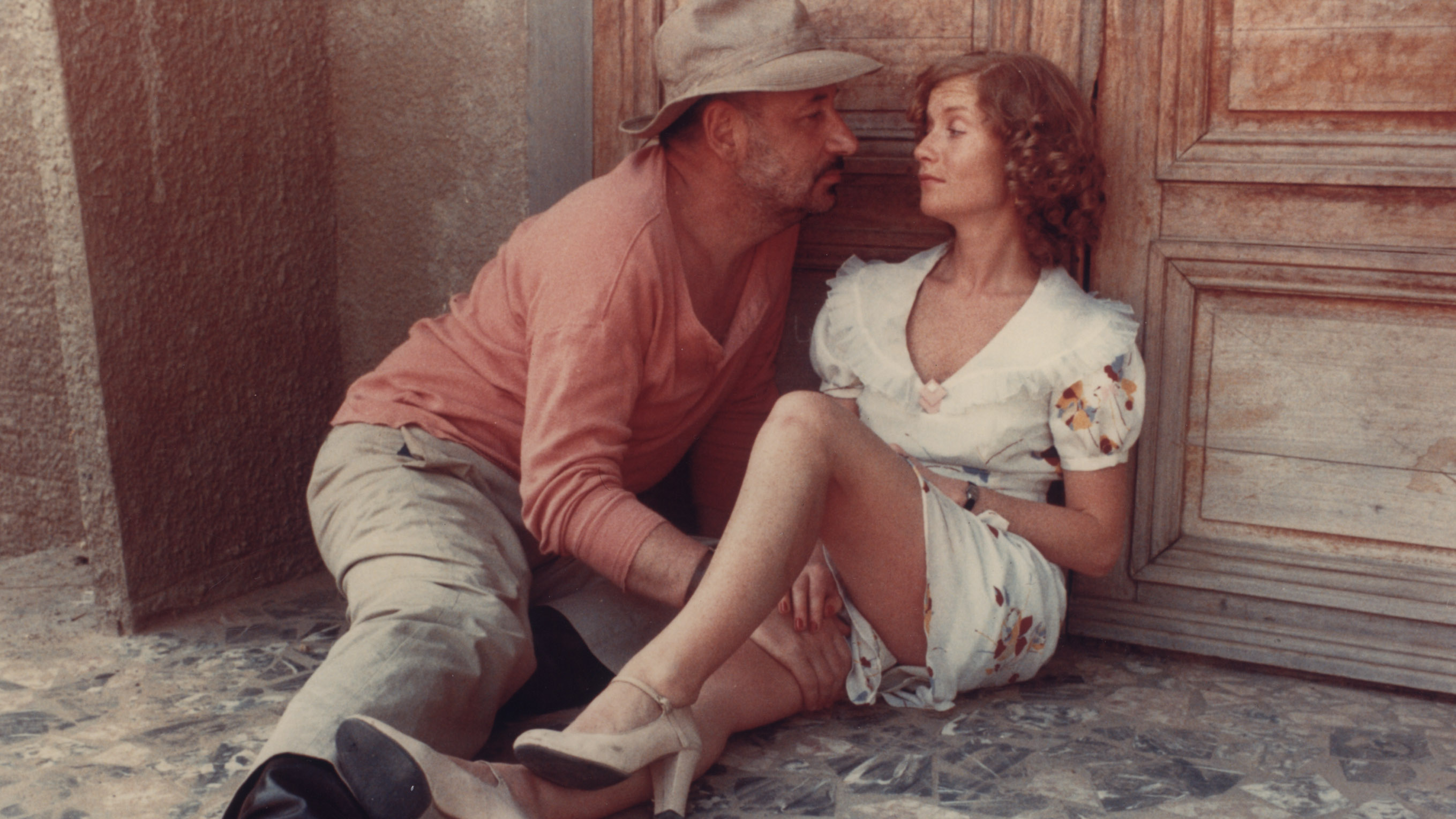Coup de torchon

With equal touches of Kafka, Genet, and Beckett, director Bertrand Tavernier’s brilliant adaptation of Jim Thompson’s 1964 pulp paperback Pop. 1280 takes place in an ethical No Man’s Land. Thompson novels are all harrowing studies in amorality, tales in which we are forced to identify with someone whom circumstances force to do terrible things—a point of view that found perfect fruition in the darkness of American film noir.
Coup de torchon is the story of a saintly madman in a world where the concepts of good and evil have no meaning. The book tells the tale of a corrupt small-town sheriff in the American south of 1910. Tavernier’s change to 1930s French West Africa makes perfect sense. Not only is racism similarly ingrained in both cultures, but the very first black slaves to come to the New World originated in French West Africa—now Senegal—where the film was shot.
Lucien Cordier (Philippe Noiret) is chief of police in Bourkassa. Despite his position of authority, nobody treats him with respect: not his wife, who openly cheats on him; not the town’s citizens, who haven’t failed to notice that he’s never made an arrest; and certainly not the two pimps who use their monthly payoffs to Lucien as an excuse to humiliate him at every opportunity.
Noiret plays Cordier as a bumbling boob, a Gallic Woody Allen with no pride or values. He is an object of ridicule, and at first we laugh at him along with everyone else. Then he becomes violent and diabolical, covertly engaging in acts so against his nature that no one suspects a thing. Once he starts on his murder spree, our sympathy works against us. As in Taxi Driver, Coup de torchon lets you identify with a lunatic, then compels you to shrink back in horror as you witness the results of his progressively ingenious rationalizations for murder. There has perhaps never been more casual gunplay; Cordier takes lives with a startling lack of drama.
Though thematically similar to film noir, with its steadfast examination of the dark side of man, Coup de torchon is musically and visually the exact opposite. Composer Philippe Sarde, a frequent collaborator of Tavernier’s, provides an evocative, jazzy, cockeyed score; cinematographer Pierre-William Glenn handily captures a bright and airy landscape burnt raw by the relentless, blistering sun.
The frequent use of Steadicam creates a feeling of eavesdropping, as though we have wandered into a series of inevitable events. Everything is relaxed and natural—so completely realistic that the most improbable conduct seems totally believable. The film goes mad just as Cordier does, and you end up alternately condoning and condemning his behavior.
According to Tavernier, the cinematography is deliberately unworldly. “I’m more and more attracted to camera movements that are not functional and that have no strategic or explanatory purpose,” he explains. “I want them to be not parallel to the action, but either ahead or behind it. They should always aim to integrate a character with the decor, not just to follow the hero. I like a camera that lingers, explores, discovers. All the French films of the time were composed around the principle of symmetry, with the hero in the center. With the Steadicam, I created an image that had no center, that kept shifting. It’s different from a hand-held camera, reportage-style: we don’t give the impression of cinéma vérité. Instead, it has an imperceptible, disquieting effect. It’s the physical equivalent of earth that isn’t solid.”
From almost any perspective, Coup de torchon is a foreign film, so unique in every aspect that there’s no way to be prepared for it. It’s a mordantly funny script, full of odd touches (like a blind white man who says “out of my sight” to a bunch of black kids), but eventually you swallow every laugh—appropriate for a film about the disintegration of values. Even the credits contain what could be either a mistake or joke. At the opening, we are correctly informed that the film is based on Pop. 1280; but during the end titles, we are incorrectly informed that it’s based on Pop. 1275. Is this a typo, or a not-so-subtle reference to the fact that five white people are killed in the course of the film?
At the start, Cordier sees some black children playing and builds them a fire when an eclipse blots out the sun. But at the end, he watches the same scene and considers shooting them. It’s an oblique attack on the morality of power that reaches no firm conclusions. Luckily, these cryptic qualities are not an obstacle to enjoyment, but only add to the mystery.
According to David Ansen in Newsweek, “Ambiguity is Tavernier’s subject and his style: You may scratch your head at times, wondering . . . exactly what the point of this dark fable is, but you will just as likely be seduced by its macabre humor.”
It might seem impossible to make a humorous movie that seriously embraces nihilism. But in the hands of a master like Tavernier, even ambiguity can be entertaining.




